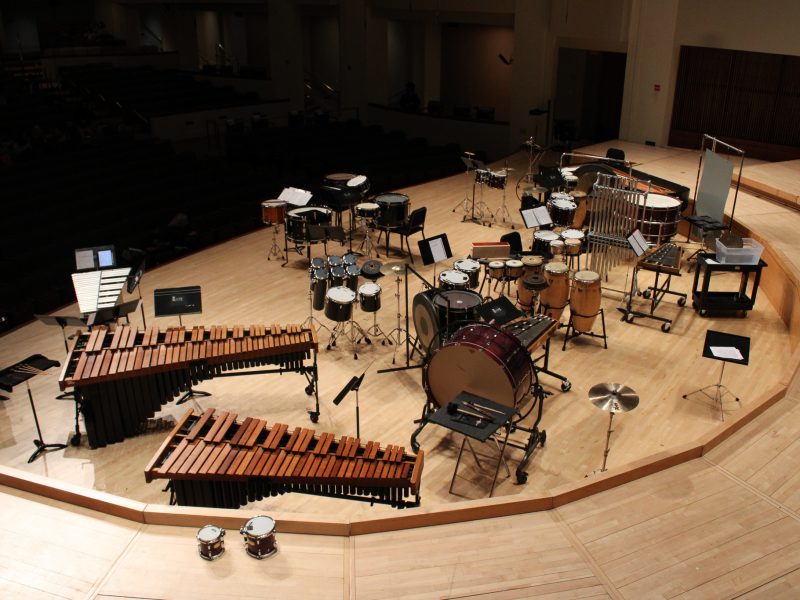Since the release of his debut album in 2005, T-Pain and his Auto-Tuned vocals have greatly impacted modern music.
Before anyone heard of the rapper-turned-R&B singer, Auto-Tune — an audio processor used to alter pitch — was used only sparingly. There were elements of it in Cher’s 1998 “Believe,” one of the first songs that used heavy voice modulation to give vocals a futuristic edge. But for the most part, Auto-Tune was used to correct subtle discrepancies during recordings to give vocalists a pitch-perfect sound.
T-Pain, instead of hiding his Auto-Tune, took a risk and made it a focal point of his music. And the risk paid off. The robotic vocal riffs and groovy electronic beats of “Buy U a Drank (Shawty Snappin’),” released in February 2007, ended up being the rising star’s first chart-topping single. Later that year, his second studio album Epiphany topped the Billboard 200. He’s won two Grammy awards, is the CEO of his record label, Nappy Boy Entertainment, and is widely regarded for influencing artists — quite notably Kanye West’s style on 808s & Heartbreak — with his unique production techniques.
But, somehow, people were shocked when they learned that T-Pain, a man whose job is music, could actually sing — and sing really damn well — without his fancy Auto-Tuned vocals. Many people had this revelation after T-Pain’s 2014 performance on NPR Music’s Tiny Desk Concert series, which has since amassed nearly 8.7 million views on YouTube.
Listening to the stripped-down and Auto-Tune-free versions of his songs, it quickly becomes evident that T-Pain has no need for an audio processor. He explores his vocal range with aplomb, scaling to high vocals with ease, and adeptly transforms his party-ready music into something much more intimate and emotional.
During his rise, it was common for people to deride T-Pain and his style. If he could really sing, people would ask, why even bother with Auto-Tune to begin with? For many, the vocal technique came across as a crutch, not an artistic embellishment. And once it became common knowledge that T-Pain is a superb vocalist — Auto-Tune or not — many felt it was only natural that he would break out of his shell and transition to a more acoustic style.
Yet for T-Pain, Auto-Tune is part of his artistry. So why, then, does this disconnect between artist and public exist when it comes to the perception of Auto-Tune?
Arguably, some blame for the distrust of Auto-Tune could be attributed to Britney Spears, who throughout her career was often accused of lip-syncing at concerts. It’s safe to say that Spears, while a good singer, has not made it on her vocals alone — she also relies on her physical attractiveness and the prowess of her songwriters. The pop singer’s sometimes-shaky vocals during concerts stood in stark contrast to her perfect vocals throughout her intricately produced discography. Naturally, people began to grow wary of Auto-Tune as they viewed it as a way for Spears and other modern artists to hide shortcomings in talent with state-of-the-art production technology.
Many other artists who use Auto-Tune in their music also face skepticism about their talent. Kesha often employed vocal modulation in her early hits such as “Tik Tok” and “Your Love Is My Drug,” leading many to doubt her vocal abilities, likely prompting the release of her Deconstructed EP, which includes acoustic versions of some of her songs. Miley Cyrus faced much the same criticism, which largely persisted until her moving performances during her “Backyard Sessions” that amassed millions of views on YouTube.
Lady Gaga, too, didn’t escape questions about her talent. At 17, she was one of only 20 students to gain early admission to New York University’s Tisch School of the Arts. After her 2008 album The Fame catapulted her into the public eye, she often performed electrifying renditions of her electro-pop songs with just a microphone and a piano. She teamed up with jazz legend Tony Bennett for their 2014 jazz album Cheek to Cheek and toured the nation with Bennett desperately trying to prove her worth as a vocalist first and performance artist second.
But despite all that effort, Twitter exploded with shock when she performed the national anthem at this year’s Super Bowl. Of course, some knew of Gaga’s talent, but just as with T-Pain, many couldn’t believe how skilled she was after years of producing electronic music.
Some people are so distrustful of artists who use Auto-Tune that it didn’t matter that Gaga has won six Grammy awards, including one for Cheek to Cheek, or has hundreds of live performances just a Google search away. It didn’t matter if T-Pain’s use of Auto-Tune inspired his contemporaries to incorporate the style into their own music, and it didn’t matter if Kesha is at her best when armed with just a guitar and her gritty vocals.
But whether you like your music heavily Auto-Tuned or not, it’s important to realize the practice can be a stylistic choice and not a cover-up.
And in the world of today’s music, where every hit song originates from a recording studio, Auto-Tune is like picking your nose: Everybody does it, but some people just try to hide it.



